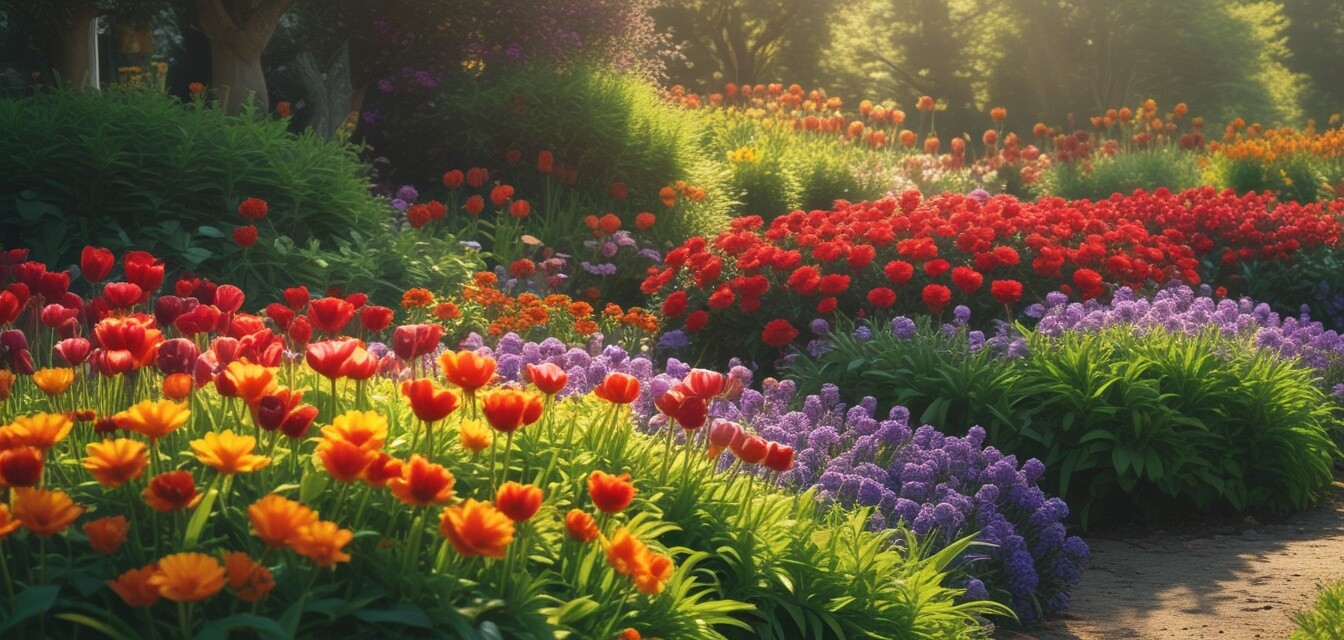
Color Schemes for Flower Gardens
Key Takeaways
- Understand the basics of color theory and how it applies to flower gardening.
- Consider seasonal blooms to create dynamic color schemes throughout the year.
- Choose complementary colors to enhance the visual appeal of your flower garden.
- Use textures and heights to create depth in your arrangements.
- Plan your garden layout carefully for maximum impact.
A flower garden can be an expression of your personality and creativity. By thoughtfully selecting color schemes, you can create stunning visual displays that capture attention and invite admiration. Whether you're starting fresh or looking to refresh an existing garden, understanding how to use colors effectively is key. In this article, we will explore various color schemes and offer tips on how to create a vibrant and inspiring flower garden.
Understanding color theory
Before diving into specific schemes, it’s essential to grasp the basics of color theory. Colors can be classified into categories, including:
| Color Category | Description |
|---|---|
| Primary Colors | Red, blue, and yellow - the building blocks of all other colors. |
| Secondary Colors | Green, orange, and purple - created by mixing primary colors. |
| Tertiary Colors | Mixes of primary and secondary colors, such as red-orange and blue-green. |
| Warm Colors | Reds, yellows, and oranges - create a sense of warmth and excitement. |
| Cool Colors | Blues, greens, and purples - evoke calmness and tranquility. |
Popular color schemes for flower gardens
Now that you have a grounding in color theory, let’s explore some popular color schemes:
Monochromatic scheme
A monochromatic scheme involves using different shades, tints, and tones of a single color. This approach can create a harmonious and cohesive look.
Tips for a monochromatic garden
- Choose a color you love, such as blue or purple.
- Incorporate flowers of varying heights and textures.
- Add foliage variations for added depth and interest.
Complementary scheme
This scheme uses opposite colors on the color wheel to create vibrant contrasts. For example, pairing yellow with purple amplifies the boldness of both colors.
Tips for a complementary garden
- Plant clusters of yellow flowers alongside purple ones.
- Balance the flower types for an even distribution of color.
- Consider using accessories like garden furniture to match or complement your color scheme.
Analogous scheme
This involves using three colors that sit next to each other on the color wheel, such as red, orange, and yellow. This scheme creates a serene and comfortable feel.
Planning your flower garden layout
Color selection is just one aspect; the layout of your garden is equally important. Here are some layout ideas:
| Layout Type | Description | Example Flowers |
|---|---|---|
| Border Layout | Flowers planted along the edges of the garden. | Daisies, tulips |
| Centerpiece Layout | A focal point surrounded by complementary flowers. | Sunflowers, marigolds |
| Layered Layout | Flowers are layered by height, creating depth. | Delphiniums, petunias |
| Mixed Borders | Combining various plants for an eclectic look. | Snapdragons, zinnias |
Seasonal considerations
Incorporating seasonal blooms can add diversity and change to your garden. Here are suggestions on how to utilize seasonal flowers:
- Spring: Utilize tulips, daffodils, and hyacinths for vibrant pops of color.
- Summer: Incorporate sunflowers and cosmos for sunny hues.
- Fall: Use asters, marigolds, and chrysanthemums for rich and warm colors.
- Winter: Even during the winter months, consider planting hellebores or pansies for color.
Final thoughts on flower garden color schemes
Choosing the right color schemes for your flower garden is an essential step in achieving an aesthetically pleasing garden space. By understanding color theory, exploring popular schemes, and considering seasonal blooms, you can transform your outdoor areas into vibrant landscapes.
For more insights on creating beautiful outdoor spaces, visit our [Garden Inspiration](/blog/garden-inspiration) category or explore our [Buying Guides](/blog/buying-guides) for a deeper understanding of garden materials and tools. Remember, a well-planned color scheme and layout can elevate your garden from ordinary to extraordinary!
Pros
- Enhances visual appeal of the garden.
- Allows for personalization and creativity.
- Promotes diversity and seasonality in flower choices.
Cons
- Can become overwhelming with too many colors.
- Requires regular maintenance to maintain vibrancy.
- May require planning for seasonal changes.